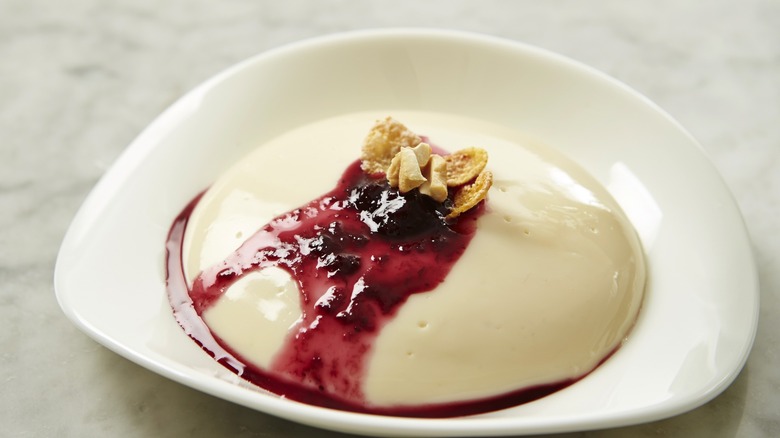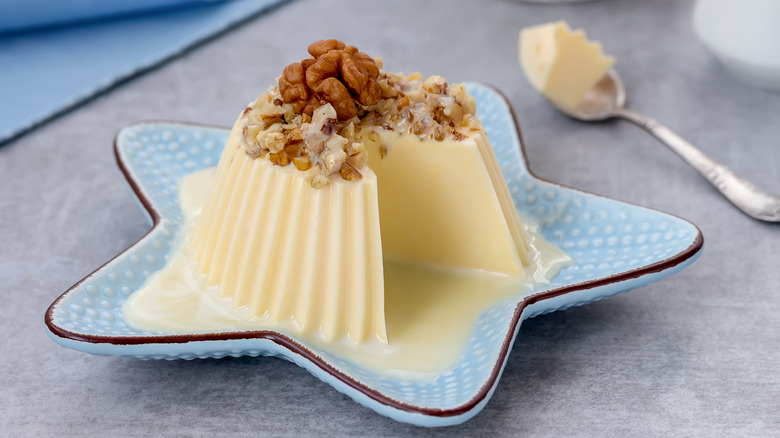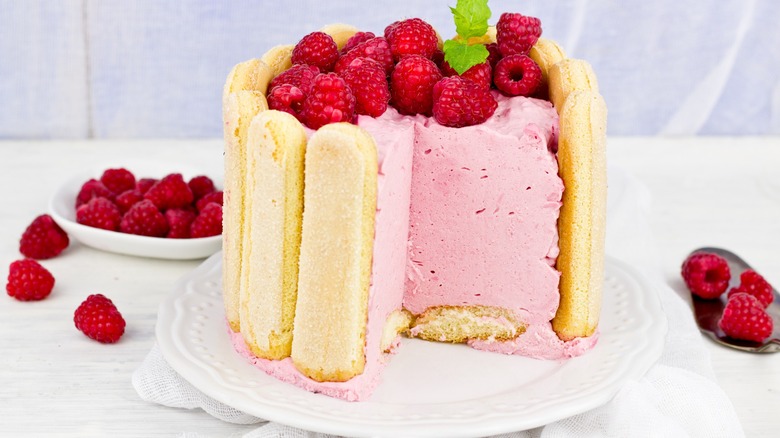What Is Bavarian Cream And How Do You Make It So Smooth?
Desserts, particularly custards, will always have a special place in the world's dining repertoire. Whether a person is sampling ice cream, éclairs, crème brûlée, or flan at the end of their meal, there's a certain magic contained in a custard's pudding-like consistency (despite the two being different) that will leave anyone satisfied. However, out of all the different types of custards, none have been more challenging to pin down than Bavarian cream.
There are a lot of riddles surrounding Bavarian cream. For starters, it seems the dessert's origins are unclear. As some have pointed out, the dish could have begun from French dessert makers working in the sweet's regional namesake around the 1600s or 1700s. However, others attribute Bavarian cream to the legendary French chef Marie-Antoine Carême. Nevertheless, the acknowledgment may have more to do with Carême taking credit for the charlotte russe, a dessert that includes Bavarian cream.
Still, that doesn't mean that the dessert has no defining standards. Aside from being a custard, Bavarian cream incorporates specific ingredients — gelatin and whipped cream — which modify its structure and makes it something new. The practice resembles another cooking technique more solidly accredited to Carême: mother sauces. As most know, mother sauces act as a base, which can be altered with other ingredients to make dozens (if not more) distinct sauce deviations. That said, let's dive into how to make Bavarian Cream and its applications.
How to make Bavarian cream
Bavarian cream is crème anglaise at its foundation, so start here. However, the process requires heating egg yolks with cream (or milk) and sugar, so some care is needed.
Prepare an ice bath and strainer beforehand. This prevents everything from getting so hot that the egg thoroughly cooks – creating lumps — and the strainer sieves any that appear. Next, mix 1 cup of sugar into 3-4 cups of heated cream or milk, ensuring incorporation while stirring so the liquid doesn't boil. Once done, temper the yolks (about 2 per cup of liquid) by pouring some of the mixture in and whisking them. This is crucial to maintaining the right temperature and assuring the eggs don't turn into breakfast when it hits the cream (so keep mixing).
Serious Eats quotes Jacquy Pfeiffer's "The Art of French Pastry" to explain. "Egg proteins are made of strands that are folded together when the egg is raw," according to Pfeiffer. "When they start to warm up in the milk, they unfold and detach, then once the mixture reaches 165℉ (75℃) to 180℉ (80℃) they reattach back together and solidify, allowing the mixture to thicken into a smooth thick custard sauce."
Another way to check Bavarian cream's doneness, if a thermometer isn't available, is it typically coats the back of a spoon. After, strain and cool the sauce into a bowl atop the ice bath before gently folding in gelatin and whipped cream.
Noteworthy applications for Bavarian cream
Bavarian cream is delicious alone, but because of the gelatin, it holds up well if you decide to incorporate other ingredients, like nuts, preserves, fruit, and other sugars. On the other hand, chilling and layering it with other elements creates something similar to flan. Still, one of the more famous ways to use the custard is in a charlotte russe cake (which incidentally was one of the foods served on the infamous Hindenburg). And this cake is a must-try, primarily because the Bavarian cream is formed into a tasty filling surrounded by ladyfinger cookies.
There are some other desserts that Bavarian cream can be a part of, such as parfaits, cream puffs, and the beloved cream-filled doughnut. Suppose you want to use the sauce immediately after making it. In that case, Bavarian cream can be substituted for crème anglaise as an excellent topping to spoon over any pastries or other sweet treats.
Bavarian cream is just one component that makes desserts extraordinary. So if you have any whipped cream, gelatin, cream, sugar, and eggs lying around and some time to concentrate on your hands, give it a try.


